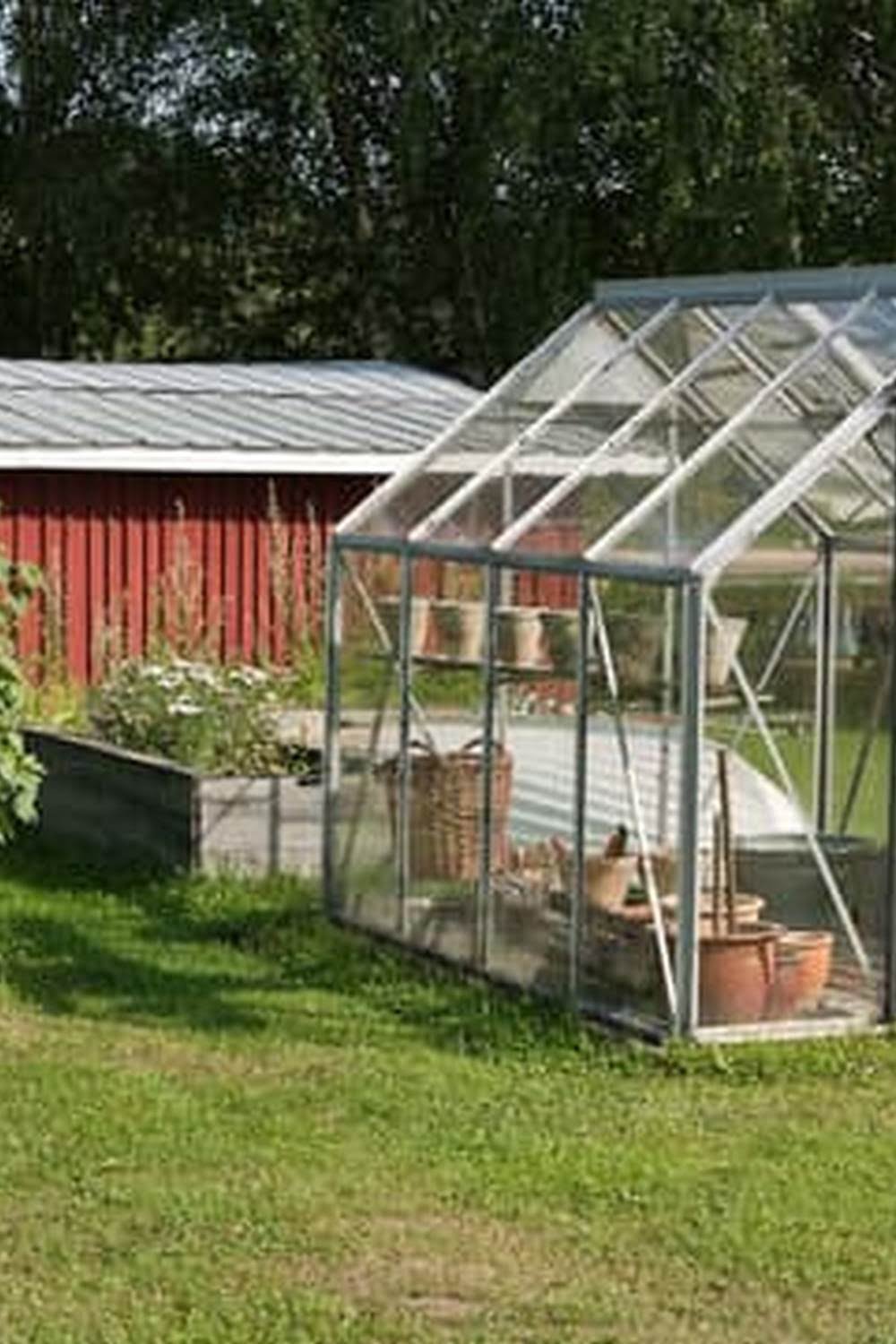Filling A Raised Vegetable Garden Bed
If you have ever gardened before, you know that one of the most important things you can do is to make sure your plants have good soil to grow in. Healthy soil means healthy plants, which means more vegetables for you! If you don’t have a lot of space in your yard for a traditional garden, or if the soil in your yard is not ideal for gardening, you may want to consider using a raised vegetable garden bed.
Raised vegetable garden beds are simply beds that are raised up off the ground using some type of material, such as wood, stone, or concrete. This allows you to garden in areas of your yard that would otherwise be unsuitable, such as on a slope or in a spot that gets a lot of shade. It also helps to improve the soil in your garden, since the raised bed creates a “container” for the soil that can be amended with compost or other organic matter to make it more fertile.
If you are interested in setting up a raised vegetable garden bed, here are a few tips to help you get started:
1. Decide on the size and shape of your bed. Raised vegetable garden beds can be any size or shape that you want, but it’s important to make sure that the bed is big enough to accommodate the plants you want to grow.
2. Choose a location for your bed. The best place for a raised vegetable garden bed is in a sunny spot with good drainage. If you can’t find a spot like this in your yard, you may want to consider using a raised bed kit, which comes with its own built-in drainage system.
3. Prepare the bed site. Before you can set up your raised bed, you need to prepare the site. This includes removing any existing vegetation, grading the soil, and adding compost or other organic matter.
4. Set up your raised bed. Once the bed site is ready, it’s time to set up your raised bed. This usually involves assembling a frame out of wood or metal and filling it with soil.
5. Plant your vegetables. Now that your raised bed is ready, it’s time to plant your vegetables! Be sure to choose vegetables that are suited to your climate and the type of soil in your garden.
If you follow these tips, you should be able to have a successful raised vegetable garden bed this year!
Raised Garden Vegetable Bed Plans
Building a raised garden bed is a great way to start or expand your garden. By elevating the garden bed, you create a microclimate that is warmer in the winter and cooler in the summer. You also improve the soil quality by building up the soil and by planting your vegetables and herbs in a raised bed, you can avoid some of the pests and diseases that can plague them.
There are a number of ways to build a raised garden bed. The simplest way is to use untreated lumber and to build the bed directly on the ground. Another way to build a raised bed is to use concrete blocks or cinder blocks. You can also use bricks, rocks or other materials to build your raised bed.
The size of your raised garden bed depends on the size of your garden and the amount of vegetables you want to grow. The standard size for a raised garden bed is 4 feet by 8 feet, but you can make it any size you want.
To build a raised garden bed, you will need untreated lumber, concrete blocks, cinder blocks, bricks, rocks or other materials, a drill, a saw, a hammer, and nails or screws.
The first step is to decide on the size and shape of your raised garden bed. Once you have decided on the size and shape, mark the outline of the bed on the ground.
The next step is to build the frame of the raised garden bed. If you are using untreated lumber, you will need to cut the lumber to the desired size. If you are using concrete blocks, cinder blocks, bricks or rocks, you will need to build a frame out of them. The frame should be sturdy enough to support the weight of the soil and the vegetables.
The next step is to drill holes in the frame for the screws or nails. If you are using untreated lumber, you will need to drill holes in the lumber for the screws or nails. If you are using concrete blocks, cinder blocks, bricks or rocks, you will not need to drill any holes.
The next step is to attach the frame to the ground. If you are using untreated lumber, you will need to use screws or nails to attach the frame to the ground. If you are using concrete blocks, cinder blocks, bricks or rocks, you will not need to attach the frame to the ground.
The next step is to fill the frame with soil. Add enough soil to fill the frame and to raise the level of the soil to the same level as the surrounding ground.
The final step is to plant your vegetables and herbs in the raised garden bed. Add compost or fertilizer to the soil to help your vegetables grow.
Concrete Vegetable Garden Beds
There is a growing trend of growing vegetables in concrete vegetable garden beds. This is a great way to keep the soil healthy and to get the most out of your garden.
Concrete vegetable garden beds are a great way to garden because they are easy to make and they hold the soil in place well. You can make your own concrete vegetable garden beds by using a form, such as a wooden box, and filling it with concrete. You can also buy concrete vegetable garden beds that are already made.
Concrete vegetable garden beds are a great way to garden because they are easy to make and they hold the soil in place well. You can make your own concrete vegetable garden beds by using a form, such as a wooden box, and filling it with concrete. You can also buy concrete vegetable garden beds that are already made.
One of the benefits of using concrete vegetable garden beds is that they hold the soil in place well. This is important because it helps to prevent the soil from being washed away or eroding. Concrete is also a very durable material, so your vegetable garden bed will last for many years.
Another benefit of using concrete vegetable garden beds is that they are easy to make. You can make your own concrete vegetable garden bed by using a form, such as a wooden box, and filling it with concrete. You can also buy concrete vegetable garden beds that are already made. This makes it easy to get started gardening, and you will have a vegetable garden bed that is ready to use.
Concrete vegetable garden beds are also a great way to get the most out of your garden. Concrete is a very sturdy material, so your vegetable garden bed will not move or shift. This means that you can plant your vegetables in the same spot year after year and they will continue to grow well.
Companion Planting Raised Bed Vegetable Garden Layout
Companion planting is the practice of planting different types of plants together in order to enhance their growth and health. When companion planting in a raised bed vegetable garden layout, it is important to consider the height, size, and shape of each plant, as well as their nutrient needs and the amount of space each will need.
Here is a suggested layout for a raised bed vegetable garden using companion planting:
In the front row, plant tall plants such as tomatoes, peppers, and eggplants. In the next row, plant shorter plants such as lettuce, herbs, and carrots. In the back row, plant plants that need lots of space, such as broccoli and cabbage.
To enhance the growth of your vegetables, plant plants that provide nutrients that the other plants need. For example, plant onions near carrots to help keep the carrots healthy. Plant marigolds near tomatoes to help repel pests. And plant herbs such as basil and mint near vegetables to help repel pests and improve flavor.
When planting in a raised bed vegetable garden, it is important to leave enough space between each plant for them to grow. Be sure to read the label on each plant to find out how much space it will need.
A raised bed vegetable garden is a great way to grow your own vegetables using companion planting. With a little planning, you can create a garden layout that will help your plants grow healthy and strong.
Raised Garden Bed Vegetables Layout
When planning a vegetable garden layout, it is important to consider the size and shape of the garden plot, the sunlight exposure, and the types of vegetables you would like to grow.
In a raised garden bed, you can create a more efficient and organized vegetable garden layout by using a square or rectangular grid pattern. This layout will make it easy to space your plants evenly and to reach all the plants in the garden.
You can plant taller vegetables in the back of the garden bed and shorter vegetables in the front. You can also group vegetables by their planting needs, such as root vegetables in one area and leafy vegetables in another.
Make sure to plan for enough space between the plants, so they can grow large and healthy. Follow the spacing guidelines for the vegetables you are growing.
When planning your raised garden bed vegetables layout, keep in mind the following tips:
-Plan your layout on paper before you start planting.
-Use a square or rectangular grid pattern.
-Space the plants evenly.
-Consider the sunlight exposure.
-Group vegetables by their planting needs.
-Follow the spacing guidelines for the vegetables you are growing.

If you’re looking to get into vegetable gardening, or are just looking for some tips on how to make your current garden better, then you’ve come to the right place! My name is Ethel and I have been gardening for years. In this blog, I’m going to share with you some of my best tips on how to create a successful vegetable garden.





